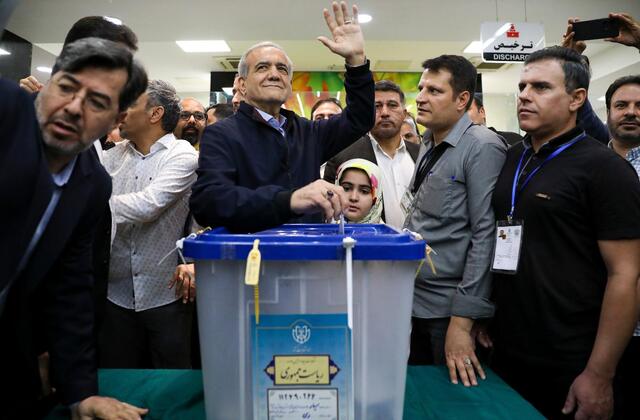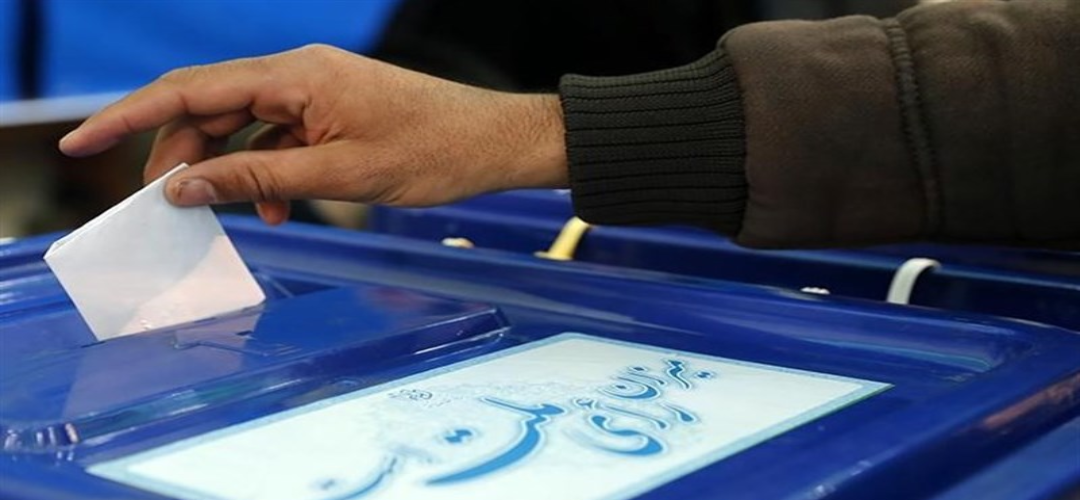Voter apathy with the harsh regime that shows no sign of relenting and the worsening economic situation underpins the ongoing presidential election.
With only 40 per cent of voters out of a total of 61 million eligible citizens coming out to cast their votes, this is the lowest voter turnout since the 1975 revolution. Following the same trend, it is only the second time since the Islamic Revolution that the presidential election went into a second round.
The two candidates, reformist Masoud Pezeshkian and hardliner Saeed Jalili, emerged to face off in the runoff election. Out of 24.5 million votes counted, Pezeshkian polled 10.4 million, while Jalili got 9.5 million. None of the candidates reached the 50 per cent threshold required to avoid a runoff, setting the stage for a likely second round of voting.
The election has been forced at a critical time when the region is on the brink of a larger conflagration, with Tel Aviv threatening to invade Lebanon to shut down the rocket-firing Hezbollah. The election’s outcome will significantly impact Iran’s future, shaping its domestic policies and international relations.
Background
Iran’s political landscape is once again in the spotlight as the country prepares for a crucial presidential election to replace the president who tragically perished in a helicopter crash last month. This election, marked by an unusual array of candidates and significant public discontent, is poised to shape the country’s immediate future amidst a backdrop of internal and external challenges.
Iran’s supreme leader, Ayatollah Ali Khamenei, who holds this office for life, remains the ultimate authority over key state matters. However, the president is also relevant as he significantly influences domestic policy and can shape foreign policy.
Once the snap election was promulgated, the Guardian Council, a powerful committee of 12 jurists and clerics, vetted an initial pool of 80 presidential candidates. Several aspirants were rejected, including seven women and a former president, and six candidates were eventually approved. Four candidates contested the first round after two dropped out to consolidate conservative support. The candidates present a diverse array, each with distinct backgrounds and political stances, reflecting a mix of reformist and conservative ideologies.
Dr Masoud Pezeshkian stands as the sole reformist candidate in the race. A cardiac surgeon and veteran of the Iran-Iraq war, Pezeshkian has served in Parliament as Iran’s health minister. Endorsed by former President Mohammad Khatami, he advocates for nuclear negotiations with the West to address economic issues exacerbated by American sanctions. His identity as an Azeri and his personal history of raising his children as a single father after the tragic death of his wife and child have endeared him to many voters, making him a prominent figure in the reformist camp.
Saeed Jalili, an ultraconservative candidate, is a former nuclear negotiator and a senior Supreme National Security Council member. Known as “the living martyr” due to losing a leg in the Iran-Iraq war, Jalili opposes negotiating with the United States and promotes economic resilience through self-reliance. He promises to reduce inflation and boost economic growth, though his assessments are often criticized as unrealistic. Jalili is viewed as closely aligned with Khamenei’s hardline views, advocating for a strong stance against Western influences.

Analysis
The election is taking place amid significant voter apathy and economic hardship. This low engagement is attributed to widespread disillusionment following nationwide protests in 2022-23 and economic struggles, including over 40 per cent inflation driven by mismanagement and sanctions.
Experts suggest that reformist candidates, disqualified in large numbers in recent elections, failed to mobilize their traditional voter base. The disqualification of many reformists appears to be a strategic move to increase voter turnout by keeping Pezeshkian in the race, aiming to bolster the election’s perceived legitimacy.
Domestically, if Dr Masoud Pezeshkian wins, it might signal a shift towards more moderate policies and potential engagement with Western powers to alleviate economic sanctions. His focus on bridging the gap between the people and the establishment could lead to domestic reforms to improve economic conditions and reduce public discontent.
On the other hand, a victory for Saeed Jalili would likely result in the continuation of hardline policies, further isolating Iran from the West and potentially escalating tensions. Jalili’s opposition to the 2015 nuclear deal and preference for economic self-reliance suggest a rigid stance in international negotiations, which could have significant implications for Iran’s foreign policy.
The economic outlook is a central theme in this election. Pezeshkian’s approach involves lifting sanctions through diplomacy, aiming to revive the economy by restoring international relations. In contrast, Jalili focuses on internal measures to combat inflation and promote economic growth without external assistance despite criticisms of the feasibility of his plans.
Assessment
- The low voter turnout reflects widespread dissatisfaction with the current political climate and scepticism about the electoral process’s fairness and efficacy. This apathy could affect the legitimacy of the election results and the incoming president’s mandate to govern.
- The candidates’ diverse backgrounds and political ideologies present stark choices for the electorate, each with distinct implications for Iran’s future domestically and internationally. There is hope in Iran’s friends that a reform-oriented president could work towards reducing Iran’s isolation globally.
- As the nation navigates this critical juncture, the eyes of the world remain fixed on Iran, awaiting the outcomes and their subsequent impact on the broader geopolitical landscape. Iran is too important a player in West Asia to remain isolated in perpetuity.




